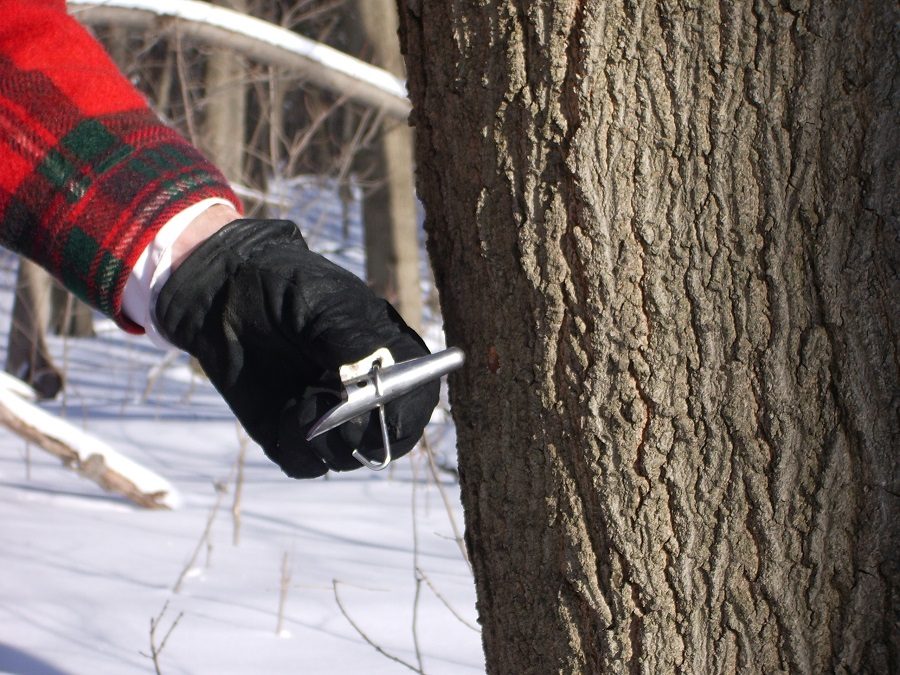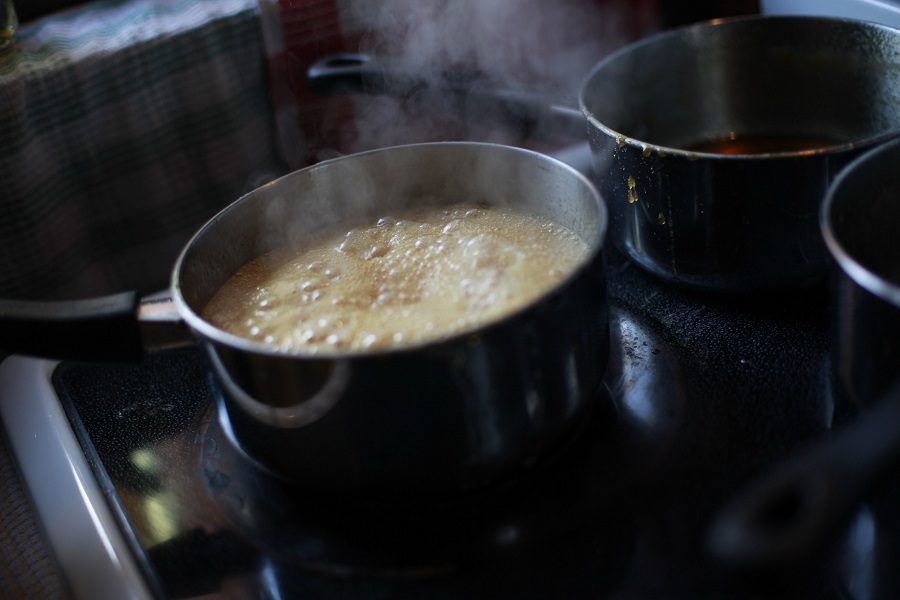This blog comes from Cathy Entwhistle, a Senior Park Interpreter at Bronte Creek Provincial Park.
It’s that time of year again, when the sweet sounds of spring fill Bronte Creek: the twittering of returning songbirds, the laughter of visitors strolling through the woods, and the plink! plink! plink! of sugar maple sap dripping into a maple bucket.
A visit to the Maple Syrup Festival walks you through the full history and process of making Canada’s favourite sweet syrup. With a few simple steps and tools, you can bring that history home with you.
**Please do not tap trees within provincial parks. Removing any natural object from a park is prohibited, and you could face a fine.
Here’s how to make your own delicious maple syrup:
Step #1
This might seem obvious, but it’s the most important step: find a maple tree!
Not just any maple tree will do. While you can make syrups from many types of trees, you need a Sugar Maple (Acer Saccharum) to make the maple syrup everyone knows and loves.
Take a close look at the leaves, seeds and bark to identify the tree. And, of course, make sure you have permission to tap the tree if it’s not on your property.
Step #2
Just like humans need to be a certain age to give blood, maple trees need to be mature before you can remove sap without harming the tree.
Measure around the tree at about shoulder height (1.5 m). The tree must be 25.4+ cm in diameter for you to put one tap in it, 45 cm for two taps, and 60 cm for three taps.
Step #3

Keep a close eye on the weather.
The sap flow begins when daytime temperatures reach above 0°C and overnight lows still dip below.
The maple syrup season ends when the buds on the twigs begin to open.
Any sap collected after this point will leave a bitter aftertaste.
Step #4
Assemble your maple tool kit!
You’ll need a drill, a maple spile, a hammer and a sap bucket.
Step #5

Drill a hole 5-8 cm into the tree at waist height, slanting slightly upwards to allow gravity to help with the sap flow. Clear away any sawdust.
Step #6
Insert the spile and tap it gently for a snug fit.
Don’t pound it in – you need to be able to remove the spile when the season is over so the tree can seal the hole.
Step #7

Hang the sap bucket on the hook attached to the spile and let nature work its magic!
Step #8
Check your bucket every day; sap left in the bucket for multiple warm days can spoil.
Store your sap in a refrigerator until you’re ready to boil it down to syrup.
Since sap has a relatively low concentration of sugar (at least compared to syrup!), you will need to collect quite a bit of sap: 40 L of sap will boil down to roughly 1 L of syrup.

Remember to remove the spile with the back of your hammer once you are done collecting sap for the season.
Step #9

Place the sap in a pot and bring to a roiling boil until it reaches 103.8°C.
This is a sticky business – if you’re boiling more than 10 L on your kitchen stove, the steam from your sap could literally peel the wallpaper off your walls!
While the syrup is still warm, filter it through a piece of clean cheesecloth to remove natural sediments.
Step #10

Pour your hard-earned syrup onto pancakes and enjoy!
Alternately, you can also store it in sterilized bottles or jars, but we think you deserve a sweet reward after all that hard work, don’t you?
